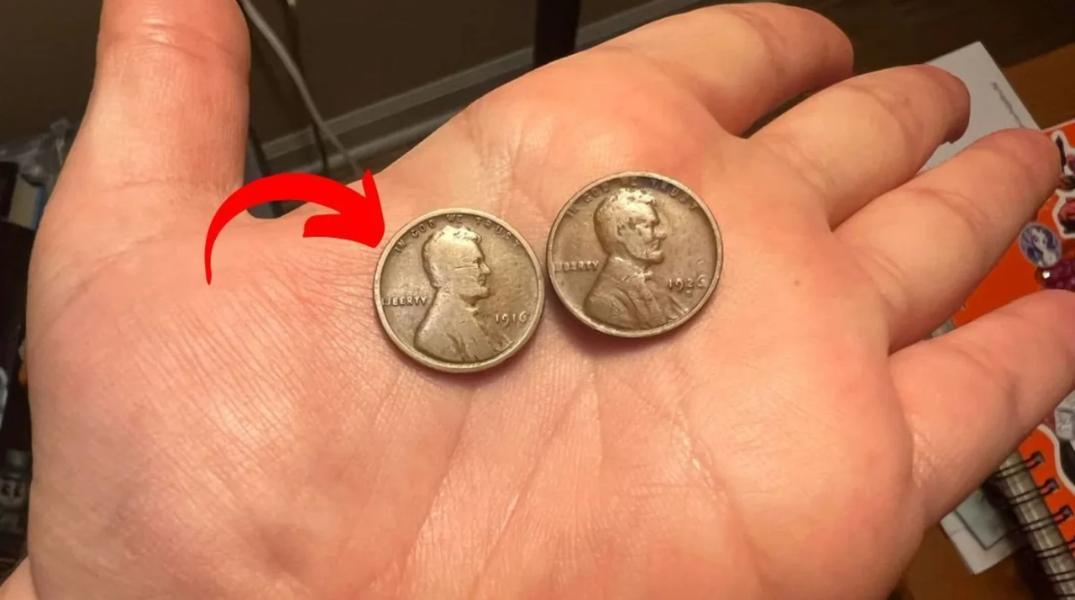The Lincoln Wheat Penny Valued At $4.2 Million – What if the key to a small fortune was sitting quietly at the bottom of a dusty coin jar? That’s the dream driving collectors across the country to keep a close eye on their change—and at the center of this treasure hunt is one of the most famous error coins in American history: the 1943-D Lincoln Wheat Penny, made of copper instead of the steel that was supposed to be used that year.
Today, one pristine example of this rare coin is said to be worth a staggering $4.2 million—and its story is as fascinating as its value.
A Penny That Changed U.S. Coinage Forever
When the Lincoln Wheat Penny was first introduced in 1909, it marked a major break from tradition. Instead of featuring Lady Liberty, as previous U.S. coins had done, this new cent bore the profile of a real person—Abraham Lincoln—in honor of the 100th anniversary of his birth.
Designed by sculptor Victor David Brenner, the penny showcased Lincoln on the front and two wheat stalks on the reverse—symbols of growth and prosperity. It quickly became one of the most iconic coins in circulation, remaining in use until 1958.
The Coin That Was Never Supposed to Exist
Fast forward to 1943, during the height of World War II. Copper was critically needed for the war effort—used in ammunition, wiring, and military supplies. So, the U.S. Mint made an unusual decision: switch penny production from copper to zinc-coated steel.
However, a small mistake occurred at the Denver Mint. Some leftover copper planchets from 1942 were accidentally fed into the machines, and they were stamped with the 1943 design. The result? A handful of genuine 1943-D copper pennies that should never have existed.
Also Read – The Lincoln Wheat Penny Valued at $5.9 Millions, Still in Circulation
What Makes It Worth $4.2 Million?
This coin’s mind-blowing valuation isn’t just about age. Here’s what makes it so valuable:
-
Unintentional rarity: These were minting accidents—fewer than 20 are known to exist.
-
Denver Mint mark (“D”): Even rarer than Philadelphia and San Francisco counterparts.
-
Uncirculated condition: The most valuable example shows no signs of wear.
-
Historical context: A wartime error adds immense historic interest.
-
Market demand: High-profile collectors and investors drive up prices.
Combine these factors and you get a coin so sought-after it could rival fine art in price.
Hidden Riches: Could One Be in Your Pocket?
Stories have surfaced of rare coins turning up in inherited piggy banks, old dresser drawers, and coin jars forgotten for decades. While the odds are slim, it’s not impossible.
Other valuable coins, such as the 1909-S VDB penny, 1955 double die penny, and certain silver dollars, are still occasionally discovered by everyday people.
How to Tell If Your 1943 Penny Is the Real Deal
If you find a 1943 penny and it looks coppery, here’s what to do:
✅ Check the color – Steel pennies are grayish and shiny; copper ones have a brown tone.
✅ Use a magnet – If it sticks, it’s steel (and not the rare one).
✅ Inspect the mint mark – A small “D” under the date means it was minted in Denver.
✅ Verify the date – Ensure it hasn’t been tampered with; some fake copper pennies are created by altering 1948 coins.
✅ Seek authentication – Get the coin evaluated by professionals like PCGS or NGC.
Tips to Preserve Valuable Coins
If you think you’ve found something special, follow these tips:
-
Never clean it – Even a soft cloth can damage the surface and reduce value.
-
Use gloves or hold by the edges – Prevent natural oils from affecting the finish.
-
Store it properly – Coin capsules or Mylar holders are best.
-
Get a professional opinion – Grading by a certified numismatist can unlock the coin’s true value.
Coin Collecting’s Surprising Comeback
In recent years, thanks to viral stories of valuable change and TikTok coin-hunting trends, coin collecting has gained renewed interest—especially among younger generations.
Modern treasure hunters now use metal detectors, estate sales, and even roll hunting (searching through bank coin rolls) to track down rare finds. The rise of social media communities has made sharing discoveries and knowledge easier than ever before.
Also Read – The Lincoln Wheat Penny Valued at $1.9 Millions, Still in Circulation
FAQs About the $4.2 Million Penny and Coin Collecting
Q: Are there really 1943 pennies worth millions?
Yes, but only the extremely rare copper versions—not the common steel ones. Most are worth a few cents.
Q: How many 1943-D copper pennies exist?
Only a small handful—fewer than 10 known to collectors.
Q: Can coins like this still be found in circulation?
While highly unlikely, yes. Some rare coins have turned up in pocket change or inherited collections.
Q: What is the best way to start collecting coins?
Begin by learning about coin types, checking your spare change, and joining online communities or local clubs. Look for error coins and older dates.
Q: What other coins should I watch out for?
-
1909-S VDB Lincoln Penny
-
1955 Double Die Lincoln Penny
-
1916-D Mercury Dime
-
1944 Steel Penny
-
1932-D or 1932-S Washington Quarters
Final Thoughts: Don’t Overlook the Ordinary
The $4.2 million Lincoln Wheat Penny is more than just a coin—it’s a legend. It proves that hidden treasure can exist in the most mundane places, from dusty drawers to forgotten coin jars.
So the next time you hear a penny drop, take a second look. You might be holding a piece of American history—and maybe even a fortune.
Disclaimer: Values and market conditions change. Always consult certified coin experts for appraisals or verification. This article is for educational purposes and does not guarantee any financial outcome from coin discovery or sale.

